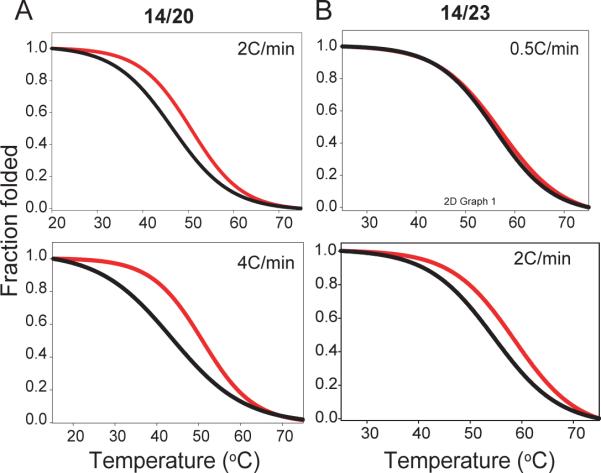Figure 4.
The CD melting (red) and annealing (black) curves of 14/20 and 14/23 loop-isomers with different temperature gradients. Hysteresis was observed between the melting and annealing curves for (A) 14/20 with temperature gradients of 2°C/min (upper) and 4°C/min (lower) and (B) 14/23 with temperature gradients of 2°C/min (upper) and 0.5°C/min (lower). No hysteresis was observed in 14/23 with a temperature gradient of 0.5°C/min, while the greatest hysteresis was seen in 14/20 with a temperature gradient of 4°C/min. The presence of hysteresis between melting and annealing profiles indicates the molecule is not at thermodynamic equilibrium during melting and annealing processes. Conditions: 10 mM Li3PO4 (pH=7), 2 mM K+.

